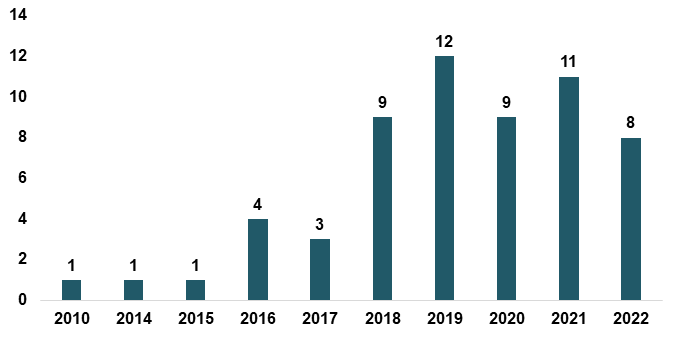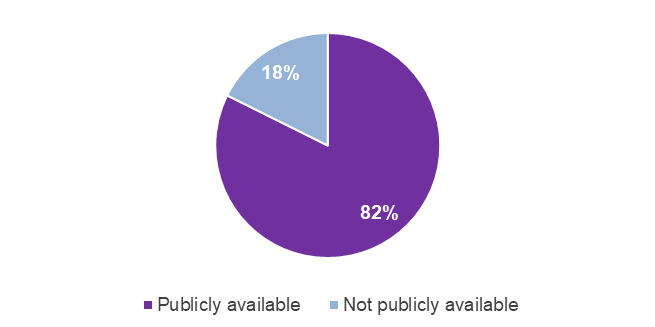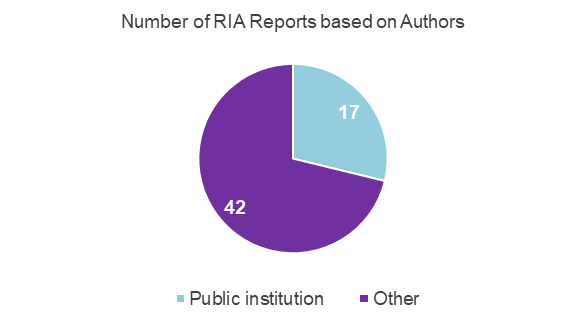 02
July
2024
02
July
2024
ISET Economist Blog
 Monday,
05
June,
2023
Monday,
05
June,
2023

 Monday,
05
June,
2023
Monday,
05
June,
2023
The majority of those of us who work in the media, and I am probably not being biased if I say particularly those of us who work in the business media, were eagerly awaiting the implementation of the Regulatory Impact Assessment (RIA) mechanism in our country.
Personally, I had two primary expectations. First, RIA would allow me to better comprehend the reasoning behind a government's decision to implement reform, and second, RIA would allow me to discuss any reform using statistics, trends, and international experience. In both instances, BMG as a media outlet would gain credibility and become a more effective instrument for increasing government accountability to citizens.
When ISET offered me the opportunity to participate in this extremely interesting initiative, I did not hesitate for a moment. I consider this form of collaboration between researchers and journalists and the development of a shared resource to be crucial. Also, it is always nice to write when reliable data and statistics are available; the ReforMeter and MediaTOR reports will serve as my primary source in this blog. The fact that you have access to the involvement and feedback of a professional researcher at any time during the work process also contributes to the creation of value. In my case, I would like to express my gratitude toward Mariam Lortkipanidze.
However, to return to the subject, I did not mention reform by accident. Regardless of how this term is defined, I believe that a change is considered a reform only when a system, law, or organization undergoes modifications that render it more modern and effective. Thus, the objective of the reform should not only be changed but also the tangible outcome of this change, namely, development.
As I frequently explain to first-year journalism students that they should adhere to the 5W principle (who, what, when, where, and why), the same is true for RIA. Before beginning the process of working on the reform, the bill's supporters must address five fundamental questions: What is the difficulty? What is the policy's objective? Is intervention necessary? What are the costs and benefits associated with resolving the issue? Which alternative offers the greatest solution?
You might ask, "Why is there so much bureaucracy needed when the questions are so predictable? Should not the bill's initiator, and even more so the government, consider this when planning changes?" Perhaps, but I can tell you from personal experience that written or typed text provides us with a greater opportunity to comprehend the subject matter. Furthermore, it is always verifiable.
A Regulatory Impact Assessment (RIA) investigates and evaluates the potential benefits, costs, and effects of a law.
In Georgia, implementation of the RIA tool began in 2018, and the mechanism was institutionalized in 2020. If we examine the period since 2010, it is evident that there have been sporadic attempts to conduct a regulatory impact assessment in the past, despite the fact that the increase in the number of RIAs coincides with the increased prioritization of this tool.
Chart 1. Number of regulatory impact assessment reports (2010-2022)

Between 2010 and 2022, a total of 59 RIAs were conducted. Considering that both simple and complex RIA still require knowledge of various types of analytical systems (such as cost utility analysis, cost effectiveness analysis, multi-criteria analysis, and discounting) – 59 – this number is likely neither excessive nor insufficient. However, it does allow us to determine who is using the RIA and when.
According to the law and the government's decree, only the government is required to submit an RIA report for the draft law, and only if it, itself, has initiated the draft law. In all other instances, the author or initiator of the initiative independently and voluntarily evaluates the regulatory impact.
In addition, Georgian legislation provides for exceptions in which there is no obligation to conduct the RIA. The RIA requirement does not apply, for instance, to draft laws relating to national security, budget (including the annual budget law), defense, penitentiary, non-custodial sentences, and probation issues. In this component, it is crucial for me as a media representative not to violate the norms on exceptions and to be able to link the various effects of various reforms to each other.
Another obstacle to this journey is the public availability of previously conducted RIA reports.
Transparency and accessibility of RIA reports are of utmost significance to me as an author and host of the BMGTV television project "Analytics." There is much room for improvement in this regard as well.
I shall describe my experience below. ReforMeter is currently the best resource for monitoring the institutionalization of RIAs; most of the statistics used in this blog are based on its data. At the same time, MediaTOR is currently the best resource for researching publicly available RIA reports, as it compiles many of those RIA reports into a single source.
Looking at the number of RIAs conducted between 2010 and 2022 and the percentage distribution of publicly available reports, we discover that 18% of RIA reports are not available to the public.
Chart 2. Share of publicly available RIA reports

Only the minority of the RIAs were done on the initiative of public institutions, with the remaining 42 prepared by other institutions.
Chart 3. Number of regulatory impact assessment reports by implementing agency

Since the majority of the initiatives, they support are contractually obligated to conduct a pre-regulatory impact assessment, it is primarily the donors who are the driving force behind this initiative.
These data indicate RIA is not yet completely institutionalized in the country.
If we were to rank the sectors of the economy, the top three sectors with the highest number of RIA reports would be the energy sector (12), the labor market (9), and agriculture (6).
Table 1. Regulatory impact assessment reports by sector
| SECTOR | NUMBER OF RIA REPORTS |
| Energy sector | 12 |
| Labor market | 9 |
| Agriculture | 6 |
| Environmental protection | 4 |
| Tax policy | 4 |
| Social policy | 4 |
| Private sector development | 4 |
| Healthcare policy | 3 |
| Human rights protection | 3 |
| Capital market | 2 |
| Spatial planning | 2 |
| Tourism | 2 |
| State procurement | 1 |
| Communications | 1 |
| Transport | 1 |
| Sports | 1 |
| Consumer protection | 1 |
Based on this, it is evident that the leaders are sectors with a high level of donor involvement.
Looking at the top three, they practically reflect the three primary areas where performing RIA adds value – these are the social, economic, and environmental sectors – that is, essentially everything that influences the smooth operation and well-being of each of us as individuals and practically all types of businesses.
In today's political reality, what we lack most as business media is a discussion of reforms and their quantitative effects – a quantification of what a given reform can bring to our country and its citizens. Donors remain engaged in this regard. For instance, USAID is now involved in the preparation of ten distinct cost-benefit analyses. According to the cost-benefit analysis of the three reforms - the insolvency and tax reforms, and the procurement law - the monetary effect of these reforms over the next ten years will be approximately 2.5 billion GEL.
In addition to the outcome, the process itself is crucial to the efficacy of RIA, including impact monitoring and evaluation. Without maximal inclusiveness, the RIA document becomes limited in scope, which diminishes its credibility and makes it not a guide but an ineffective document. This strategy relies on extensive consultation; without it, RIA effectiveness cannot be attained.
As I explain to journalists with 5W, there is always another critical question to ask: How? The article or report will be incomplete without it. It is the same here: unless inclusivity, openness, and monitoring become a priority, there will always be an opportunity to approve key initiatives that will eventually impact each of us, without assessing regulatory impact. And our viewers or readers would still only assess emotions and feelings, and not a perspective, that is closest to reality.
* * *
DISCLAIMER: This blog article is made possible by the support of the American people through the United States Agency for International Development (USAID). The contents of this blog do not necessarily reflect the views of USAID or the United States Government.





